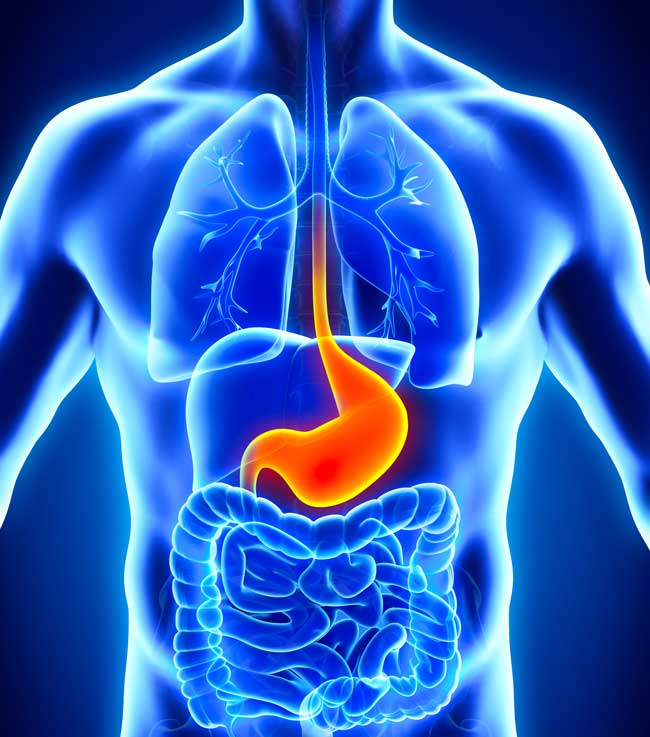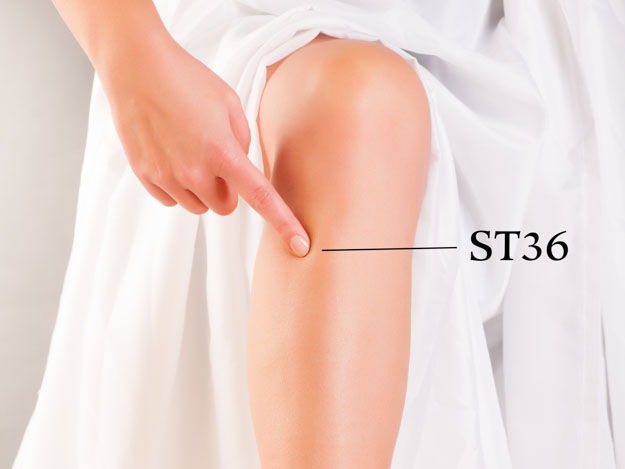Acupuncture improves esophageal function for patients with gastroesophageal reflux disease, even in cases where drugs are ineffective.
Researchers find acupuncture effective for alleviating gastroesophageal reflux disease (GERD). Patients unresponsive to drug therapy saw significant improvements after receiving acupuncture care. High resolution measurements of the esophagus confirm that acupuncture improves the activity of the valve whose proper functioning prevents acid reflux.

Acupuncture is effective for the treatment of gastroesophageal reflux disease (GERD). Shanghai Jiaotong University School of Medicine researchers (Lin et al.) conclude that acupuncture greatly improves esophageal motility in refractory GERD patients. The results were confirmed with high resolution esophageal impedance manometry, a test measuring the function of the lower esophageal sphincter (LES) and esophageal muscles.
Acupuncture successfully improved LES pressure and function, thereby increasing resistance to acid reflux. The LES is a valve preventing the backflow of gastric acid into the esophagus. Acupuncture increased esophageal peristaltic pressure and integrity, an important function for gastric acid clearance. In addition, acupuncture improved swallowing.
You may enjoy sharing this information, visit the HealthCMi Podcast >
Refractory GERD is the type of gastroesophageal reflux disease that is partially or completely unresponsive to proton pump inhibitor (PPI) medications. PPIs are drugs that inhibit H+/K+ ATPase in the stomach parietal cells. PPIs cause long-lasting reduction of stomach acid produced by glands in the lining of the stomach. The study demonstrates that acupuncture is successful in cases where PPIs are ineffective. Several mechanisms contribute to refractory GERD:
- duodenogastroesophageal reflux
- bile reflux
- internal organ hypersensitivity
- delayed gastric emptying
- nocturnal acid breakthrough
- GI motility disorders
Reflux in GERD occurs primarily due to esophageal motility disorders including increased frequency of transient lower esophageal sphincter (LES) relaxation. Prolonged reflux can cause esophageal mucosal injury, therefore prompt treatment is essential. Current GERD treatments involve acid suppression therapy and prokinetic agents. Prokinetics are drugs that increase gastrointestinal motility by increasing the frequency of small intestine contractions, strengthen the LES, and cause the stomach to empty its contents more rapidly.
Often, GERD patients do not experience an abnormal increase in gastric acid secretion. In these cases, gastric acid suppression therapy can minimize reflux esophageal damage by increasing the pH of the substances that come into contact with the esophagus during reflux. However, acid suppression therapy is limited by the fact that it does not inhibit the reflux action itself.
The use of prokinetic agents is controversial. The national consensus deems prokinetic agents to be effective in reducing reflux in patients with gastroparesis by facilitating the emptying of stomach contents into the intestine and thereby reducing upward pressure. However, studies have found that 2 weeks of treatment with mosapride, a gastroprokinetic agent, did not result in any significant improvement in esophageal motility nor LES function.
A total of 40 patients with refractory GERD participated in this study. They were randomly divided into two equal groups: treatment group, control group. High resolution esophageal impedance manometry was conducted twice, prior to and after treatment. After the first manometry exam, control group patients lay down for 30 minutes, while the treatment group received acupuncture treatment. The primary acupoints selected for the treatment group were needled bilaterally:
- Neiguan (PC6)
- Gongsun (SP4)
- Zusanli (ST36)
A 0.25 mm x 40 mm disposable acupuncture needle was inserted into each acupoint, according to standard insertion depths. Upon arrival of a deqi sensation, an acupuncturist applied the Ping Bu Ping Xie (tonify and sedate) manipulation technique to each needle. Next, a needle retention time of 30 minutes was observed during which the needles were manipulated once every 5 minutes for a total of 6 times.

Gongsun and Neiguan are two of the eight confluent acupoints in TCM (Traditional Chinese Medicine) acupuncture. The Gongsun acupoint is on the point where the Chong meridian and spleen Taiyin meridian intersect. The Neiguan acupoint is located on the point where the pericardium Jueyin meridian and Yin Wei meridian intersect. Both acupoints are indicated for the treatment of heart, chest, and stomach ailments in TCM. The Zusanli acupoint, which is located along the stomach Yangming meridian, is a classic acupoint commonly selected when treating a multitude of diseases, especially abdominal illnesses.
Based on the research, the investigators conclude that acupuncture improves LES pressure and effective length, which raises resistance to reflux. Additionally, it increases peristalsis strength of the esophagus, which is crucial in facilitating esophageal acid clearance and reducing esophageal exposure to an acidic environment. The results of the research by Lin et al. indicate that acupuncture increases LES pressure and effective length, raises esophageal peristaltic pressure and integrity, and improves swallowing.
The Acupuncture Group
Before and after treatment, refractory GERD patients who received acupuncture had an average LES resting pressure of 20.2 mm Hg and 26.3 mm Hg respectively. The length of the LES increased from an average of 2.2 to 3.3 cm. The distal esophageal peristaltic amplitude increased from and average of 73.7 mm Hg to 88.5 mm Hg. Duration of peristalsis increased from and average of 2.9 seconds to 3.2 seconds. These differences were all statistically significant. However, there was no significant difference in the LES residual pressure.
The Control Group
On the other hand, before and after, the control group reported an average LES resting pressure of 20.4 mm Hg and 19.8 mm Hg respectively. The average length of LES increased from 2.3 cm to 2.5 cm. The average distal esophageal peristaltic amplitude increased from 69.7 mm Hg to 71.3 mm Hg. Duration of peristalsis increased from an average of 2.8 seconds to 2.9 seconds. These differences were all statistically insignificant except for the length of LES. Similar to the acupuncture treatment group, there was no significant difference in the LES residual pressure.
Comparison
The acupuncture group also saw a significant increase in normal swallows, from 56% before treatment to 74% after treatment. The control group saw no significant increase, from 58.5% before treatment to 54.5% after treatment. The acupuncture group saw a reduction in delayed esophageal emptying, from 31.5% before treatment to 11.5% after treatment. The control group saw an insignificant difference—from 40% before treatment to 44.5% after treatment.
The clinical results demonstrate that acupuncture produces positive patient outcomes in the treatment of refractory GERD. Patients who received acupuncture saw improvements in all measures of esophageal function related to GERD. This is an encouraging validation that acupuncture can be implemented effectively when standard medication therapy has little curative effect on GERD.
References:
Lin H, Sun J, Yuan YZ & Tang YM. (2014). Effects of acupuncture on esophageal motility of patients with refractory gastroesophageal reflux disease. Chinese Journal of Digestion. 34(10).
Ates F & Vaezi MF. (2014). New approach to management of PPI in treating refractory gastroesophageal reflux disease. Curr Treat Options Gastroenterol. 12(1): 18-33.


